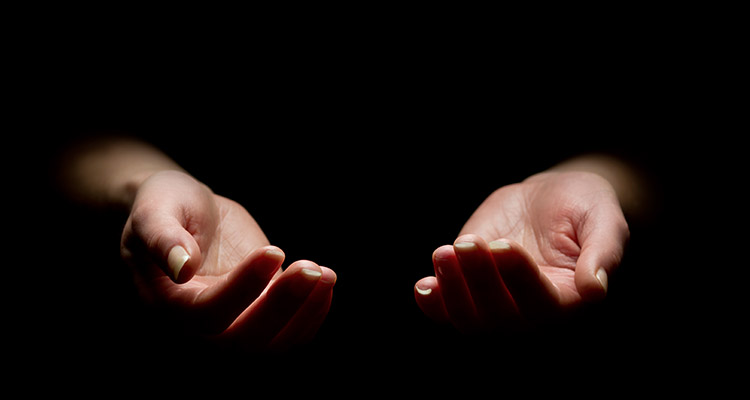As Richelle Amundson ’14 M.S.W. began to explore topics for her clinical research project, a requirement of her final year in the Master of Social Work program, she recalled her volunteer experience at the Center for Victims of Torture, which included working with many women who had experienced rape.
“I was in awe of how positive, hopeful and wise these people were,” Amundson said. “I saw a lot of … things I wasn’t expecting to see in someone who had experienced trauma.”
This light and hope – the survivors’ resources – seemed to be founded in spirituality, Amundson noticed.
While sifting through the previous research, Amundson, who received her B.S. in accounting from Mankato State University in the early ’90s, noticed a lack of attention on spirituality’s role in the healing process following a trauma. Healing, Amundson says, happens when people are able to build a new framework in which they can begin to make sense of what happened, allowing them to live their lives beyond the trauma. To build this new framework, people must involve and work with others; however, the nature of sexual assault damages the interpersonal skills needed to work with others on this framework.
This problem prompted Amundson to ask: Can spirituality help people build those relationships needed to heal?
Finding survivors
With the guidance of her research chair, Jessica Toft, Ph.D., associate professor in the School of Social Work, and her committee members, Eva Solomonson, L.I.C.S.W., and Deborah Organ, L.I.C.S.W., Amundson focused her topic on the role of spirituality in post-traumatic growth after sexual assault.
“This topic [sexual assault] is big in a lot of ways, but Richelle was constantly saying, ‘I can do this,’” Toft said. While a “quiet student face to face,” Toft refers to Amundson as “courageous” and a “deep thinker” who “brings an important lens to these types of issues."
Not wanting her research to cause additional harm to the population she was looking to learn from, Amundson began cautiously crafting her project.
After receiving approval from the International Review Board, a step necessary for researchers in all fields who wish to use human subjects, Amundson distributed an online survey through two different venues. She sent a survey link to people who knew participant candidates, who, in turn, were asked to pass along the survey. Next, she connected with the moderator of an online forum for sexual assault survivors, who encouraged her to share the survey on the site.
Amundson kept the survey’s wording broad and generic, defining spirituality as, “any transcendent force that [participants] thought was influential in their lives.”
Other questions asked participants to consider their relationships with their spiritual communities; the nature of their spirituality, whether it was personal or communal; their social communities; and the way in which they were creating meaning in order to heal – all in the context of their trauma, their sexual assault.
Finding ways to heal
Some of the results confirmed Amundson’s expectations. Those who were active with their spirituality prior to the sexual assault and continued to use it after the attack were most likely to do so in a way that helped them positively work through the trauma. This group was also the furthest along in the recovery process. Amundson explained that when people have had a history with spirituality before a trauma, they’ve had time to make sense of some of the inevitable contradictions. So, when they experience something awful and violent, they have a solid foundation of beliefs on which they can deal with the trauma.
Other outcomes surprised her. The people who didn’t use spirituality before or after their sexual assault experienced the next highest recovery rate. Although they did not identify a relationship with a transcendent force, they did put more effort into relationships with other people. They were better able, they felt, to count on others and express their emotions, which acted as their framework within which they could sort through the trauma.
The individuals who struggled the most were those who did not make use of spirituality before the assault but tried to add it as a resource following the attack. Their survey responses seemed to reflect a greater inner struggle than that of the other two groups. Amundson explained that this group might have found it difficult to sort through “those big, theological questions while simultaneously dealing with the trauma, which is already a huge stressor.” They lacked a stable framework, and as such, it was harder to heal.
This is not to say that if you don’t have a spiritual relationship before sexual assault, then you never will. Rather, those who choose to incorporate spirituality following the trauma will need support to use it effectively. “It’s going to take time and it’s going to be a struggle,” Amundson explained, but it’s also an opportunity for therapists and pastoral people alike to offer support and guidance.
As a licensed graduate social worker, Amundson is working toward her required 4,000 supervised hours at an intensive residential treatment services facility, just west of the Twin Cities. When done, she will take a clinical-level exam to become a licensed independent clinical social worker.
As for the research, her experience and the results have and will continue to influence how she works. Conscious of the potential mixed messages a client might receive from her church, family and health providers, Amundson strives to advocate for and support the whole person – spirituality and all – through the healing process.
“I’d like to be the kind of [social worker] who can allow spirituality to be in the room with us,” Amundson said.







